(body of ). The body of each geometrical simplicial compact is a compact subset of .
Definition. Sub-complex of
A Sub-complex of is a complex s.t. if then ().
Definition. -skeleton of
The -skeleton of is a collection of all simplexes of having dimension less than or equal to .
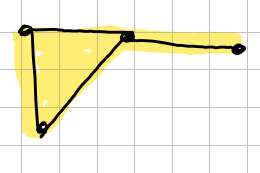
The -skeleton is the set of simplexes of dimension less than 1, so are the segments, the points and the empty set.
Abstract Simplicial Complex
It is a finite collection , with and with verifying:
with a finite .
Each set in is finite.
Note. The second property of the geometrical simplicial complex holds here, but it’s free we don’t need to set it.
We have a finite collection and each subset belongs to the collection, and since it’s finite we can’t have elements of that are infinite.
In for every set in it, we also have all subsets.
e.g.
Isomorphism between and
and are a.s.c.
With being the bijection:
A trivial example of isomorphism is the , in general, when we can translate the vertice of an a.s.c. to the vertices of another a.s.c. bijectively we have isomorphism between the two.
Relations between g.s.c. and a.s.c.
Let be a g.s.c., we can immediately get an a.s.c. by defining the vertex scheme of , denoted as , as the following:
N.B.: is a convex hull .
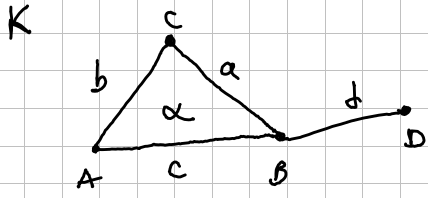
In this specific case, is equal to:
It’s possible to get from a a.s.c. to a g.s.c. ?
Yes, by using the Geometric realization theorem.
Geometrical realization theorem
We say that the g.s.c. realizes the a.s.c. iff:
B is isomorphic to the vertex scheme of .
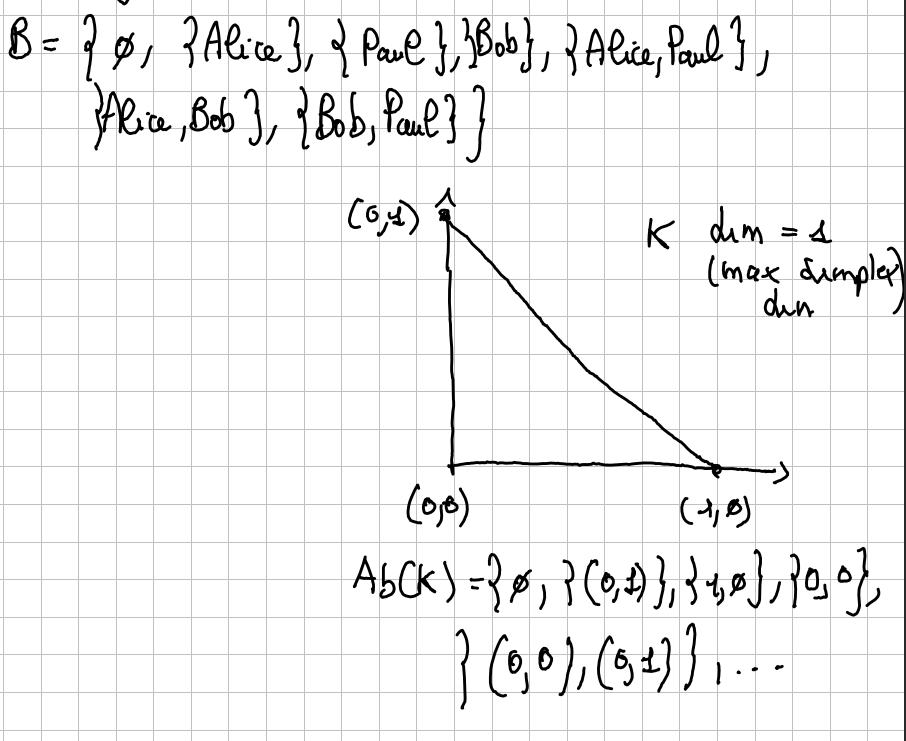
It’s isomorphic because you can assign to each element of one of and the opposite. A.k.a you can go from the view with coordinates and points, to the textual one by assigning to each point one of the names (Alice, Bob and Paul).
Theorem: Geometric Realization Theorem Let be a a.s.c. of dimension . can be realized as a g.s.c. in .
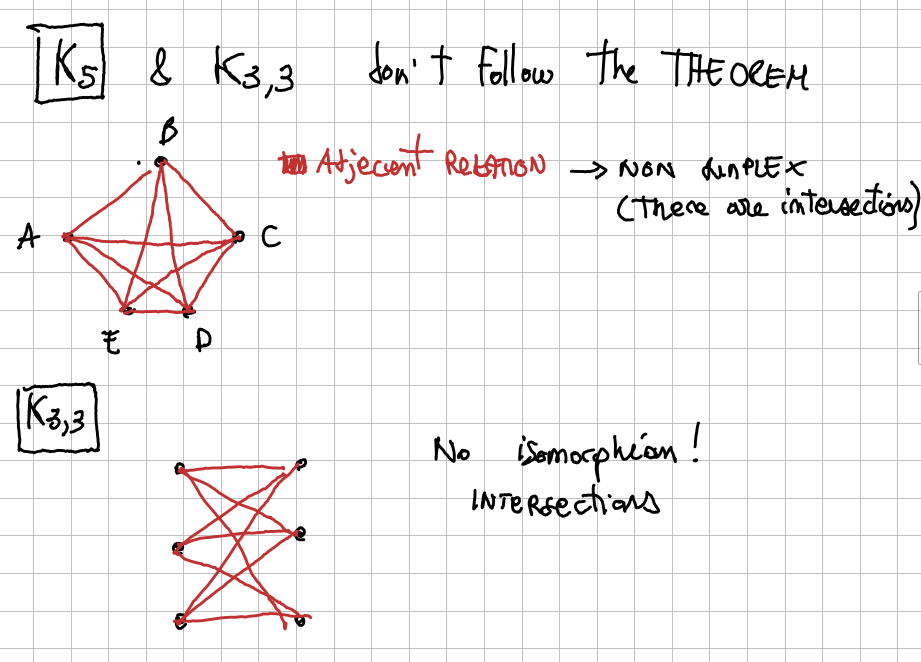
If you take the graph and the adjacency are by the line drawn in red. The red part is just the structure. This is not realizable in , it’s easy to do in . So you can’t do better than the theorem, in the sense that you need all those dimensions.
Nerve
Definition of Nerve. Let us assume to have a finite collection of open sets:
With a finite .
We call Nerve, , the collection of all the subsets of having non-empty intersection.
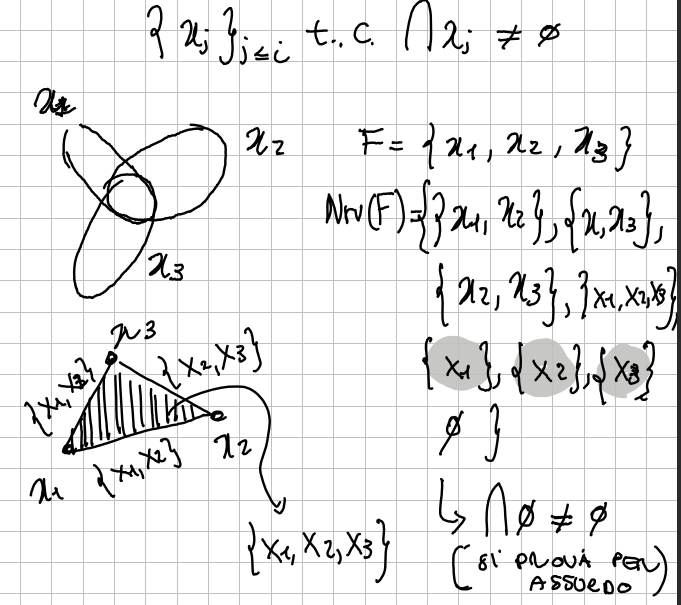
The empty set is there, because the intersection of a family of empty set is not empty.
How to transform a cloud of points in into a g.s.c. ?
There are plenty of methods to do it, we are going to see the Čech complex and the Vietoris-Rips Complex.
Čech complex
Let us assume that that is finite. Let us choose a .
Set .
is the ball centered in with radius .
We then consider the .
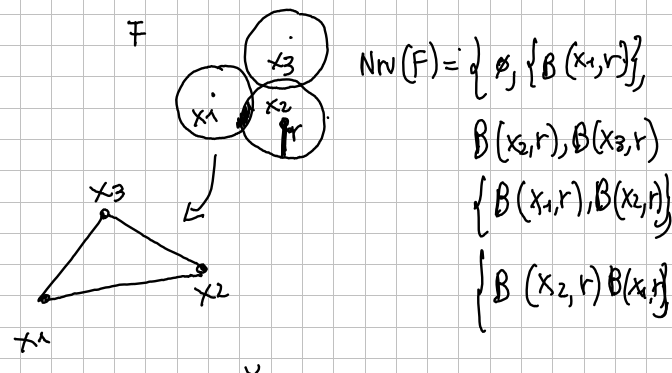
We can than realize the g.s.c. from the .
is called Čech complex of with radius .
Vietoris-Rips Complex
,
The Vietoris-Rips is:
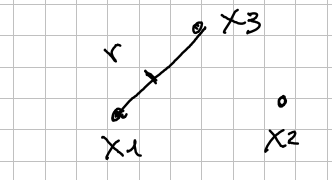
The evolution of the a.s.c. when you increase is just the three singletons, then when your reach where is the distance between the points, the segments starts to join the a.s.c.
Vietoris-Rips Lemma. When you take the
The operator is used to consider the center of the ball.
Collapsibility
We have a g.s.c. :
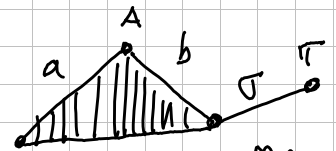
If there is some simplex with just a co-face: We can consider the new complex obtained from by removing and . We say that we can collapse .
Co-Face
If is a face of , then is a proper co-face of .
In the image is a face of the edge . We can remove and . This move is called elementary collapse. The inverse is adding them again. Called inverse elementary collapse.
Applying it sequentially, to the image you can remove it until you have just one point.

Let’s see the procedure:
- We remove and ;
- Then, since each edge it’s the only co-face of the triangle , we can remove one of it, alongside the triangle;
- Then, we procede to remove and since it’s the only co-face of ;
- Finally, we do the same for the other point and its co-face ;
- We obtain just the single point .
When this happens, the complex is called collapsible.
Example of a non-collapsible simplicial complex:

Defition of the elementary space
with just the two operations .
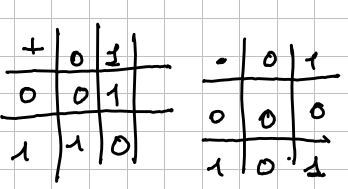
Definition of Quotient Space.
Let be a vector space. Assume that is a vector sub-space of .
Chain Complex
Chain complex is a sequence of vector spaces
is the homorphism between the vector spaces.
Definition of Kernel, Image and Homology of a Chain Complex
set of -cycles
set of -boundaries
Homology group of the chain complex in degree
Formal Linear Combination
Short-manner formal way of representing a subset of , i.e. of choosing some .